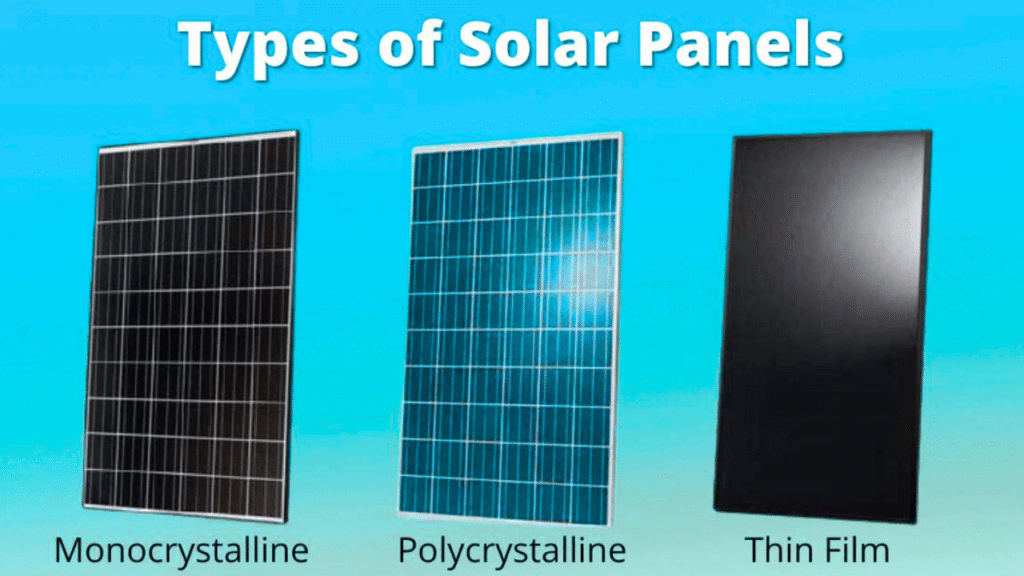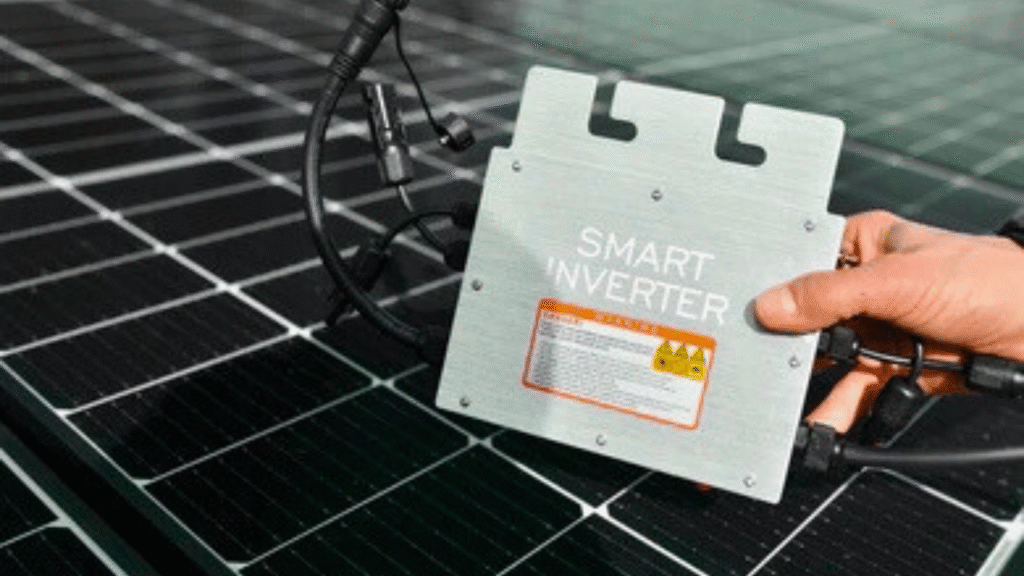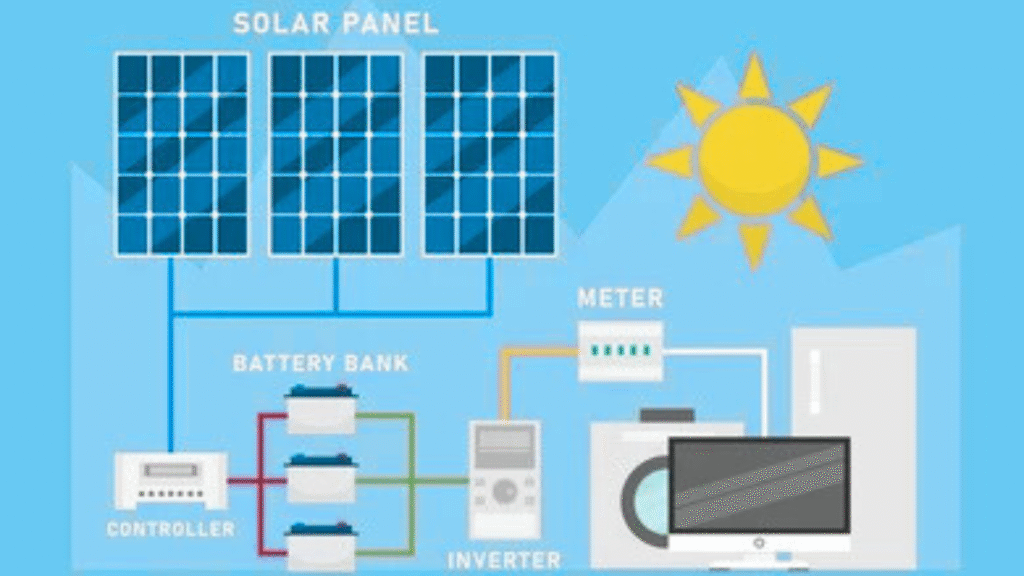Did you know that solar installations grew by 23% last year, yet most systems waste nearly 30% of the energy they capture? HMS Photovoltaik changes this completely.
Have you ever wondered how solar energy can be made smarter and last longer? This article explains how HMS Photovoltaik operates and why it is important for achieving energy self-sufficiency. This technology transforms how homes and businesses harvest sunlight. Rather than settling for standard panels, it combines smart monitoring with storage solutions that actually work.
Why do most solar setups fail to deliver promised savings? The answer lies in outdated management systems that cannot adapt. This article demonstrates how modern solutions address this issue and deliver tangible benefits to your energy bills.
Table of Contents
How HMS Photovoltaik Brings Solar Power to Life
It represents a shift in how we capture and use solar electricity. It combines proven technology with smart management tools that actually reduce your bills.
The Journey of Solar Power Over Time
Solar panels appeared commercially in the 1950s, but only wealthy organisations could afford them. Back then, a single panel cost over $300 per watt. Today, prices dropped below $0.50 per watt, making renewable power efficiency accessible to regular households.
HMS Photovoltaik emerged from decades of research into better energy capture. Engineers studied why traditional systems lost so much potential power during conversion. They found that outdated inverters and poor monitoring were the main culprits.
The breakthrough came when developers combined multiple technologies into one integrated platform. This hybrid solar energy system approach solved problems that plagued older models. Instead of separate components fighting each other, everything works as a unified whole.
Explanation of How the System Works
Sunlight hits photovoltaic cells on your roof, creating direct current electricity. This raw power flows through cables to an inverter station. The inverter converts DC into AC power that appliances can use.
But it adds three extra layers that standard systems skip. First, intelligent solar monitoring tracks every panel’s output in real-time. Second, battery banks store excess energy for nighttime use. Third, smart controllers decide whether to use, store, or export electricity to the grid.
Think of it like a traffic controller at a busy intersection. Regular solar just opens all lanes at once, causing chaos. It directs energy flow based on actual demand and optimal timing.
Role of Hybrid Solar Energy System in Energy Self-Sufficiency
Most homes import 60% of their power after sunset, even with solar panels installed. Why? Because standard systems have no storage capacity. When the sun sets, you’re back on the grid, paying premium rates.
A proper energy self-sufficiency system eliminates this dependency. It stores daytime surplus in high-capacity batteries. During evening hours, your home runs on stored sunshine instead of grid electricity.
According to a 2024 study from the German Solar Association, households using integrated storage reduced grid dependency by 78%. That translates to €1,200 annual savings for an average family. The payback period shortened from 12 years to just 7 years with proper storage integration.
Solar Panels that Drive HMS Photovoltaik Forward

The photovoltaic power solution you choose determines overall system performance. It adapts to whatever technology suits your specific situation.
Types of Panels That Boost Renewable Power Efficiency
The photovoltaic power solution you choose determines overall system performance. Three main technologies dominate the market today:
- Monocrystalline panels: 20-22% efficiency, perfect for limited roof space
- Polycrystalline alternatives: 17-19% efficiency, cost 15% less than mono
- Thin-film technology: 12-15% efficiency, performs better in partial shade
Bifacial panels capture sunlight from both sides, increasing total output by 15-20%. Half-cut cell technology reduces heat buildup, maintaining solar panel performance boost even during summer. PERC panels push efficiency above 22% for premium installations.
Different Solar Panels HMS Photovoltaik Uses
It doesn’t lock you into one panel type. The system adapts to whatever technology suits your specific situation. This flexibility sets it apart from competitors who force standard solutions on every customer.
Bifacial panels represent one popular option within the HMS ecosystem. These panels capture sunlight from both sides, increasing total output by 15-20%. Light reflecting off your roof surface hits the back side, generating bonus electricity.
Half-cut cell technology reduces internal resistance and heat buildup. When panels get hot, efficiency drops significantly. Half-cut designs keep temperatures lower, maintaining solar panel performance boost even during scorching summer days.
PERC (Passivated Emitter Rear Contact) panels add an extra reflective layer on the back surface. This innovation pushes efficiency above 22% for premium installations. It integrates PERC technology seamlessly with its monitoring systems.
How These Panels Boost Solar Panel Performance
Panel selection impacts daily electricity generation, but installation quality matters equally.It requires panels to face optimal directions based on your hemisphere and latitude. In Germany, south-facing panels angled at 30-35 degrees capture maximum annual energy.
String configuration also affects the overall output. When panels connect in series, one shaded panel drags down the entire string’s performance. It uses advanced solar inverter technology with panel-level optimisation. Each panel operates independently, preventing shading losses.
Temperature coefficients tell how much power drops as panels heat up. Quality panels lose only 0.3% per degree Celsius above 25°C. Cheaper alternatives lose 0.5% or more. Over a hot summer, this difference adds up to hundreds of kilowatt-hours.
Eco-Friendly Solar Design for Modern Users
Modern eco-friendly solar design considers the complete lifecycle, not just energy production. Panel manufacturing requires significant resources, so choosing durable products matters. HMS Photovoltaik partners only with manufacturers offering 25-year performance warranties.
Recycling programs now reclaim 95% of materials from old panels. Silver, silicon, glass, and aluminium all get reused in new manufacturing. This circular economy approach reduces the environmental footprint of solar adoption.
Aesthetics play a growing role in residential installations. Black-on-black panels blend beautifully with dark roofs, satisfying homeowner associations and maintaining property values. It offers multiple visual options without sacrificing performance.
- It systems can increase solar energy capture by up to 30% compared to older solar setups.
- Battery storage it allows homes to use solar power up to 40% more hours daily.
- Intelligent monitoring reduces system faults by 20%, ensuring longer service life.
You Might Also Like: Axurbain Innovative Technology Supporting Secure Urban Growth
How HMS Photovoltaik Powers Homes and Businesses
This system delivers measurable results from day one. Businesses operating during daylight hours see the biggest immediate savings because they consume solar power as it is generated.
Benefits Like Clean Energy Innovation and Renewable Power Efficiency
Switching to it cuts electricity bills immediately. A typical household consuming 4,500 kWh annually saves €1,400-€1,800 each year at current German utility rates. Commercial operations with higher consumption see proportionally larger savings.
Clean energy innovation extends beyond money. Carbon footprint reduction matters to environmentally conscious consumers. A standard residential system prevents 3.5 tons of CO2 emissions annually. Over 25 years, that equals taking two cars off the road permanently.
Grid independence provides peace of mind during outages. Traditional solar shuts down when the grid fails, leaving you powerless. HMS Photovoltaik with battery backup keeps lights on during storms and grid maintenance. This reliability proves invaluable in regions with ageing infrastructure.
How the System Improves Energy Storage and Management
Battery technology revolutionised home solar viability. Lithium-ion batteries now last 10-15 years with minimal degradation. It uses sustainable energy storage solutions that maintain 80% capacity after 6,000 charge cycles.
Smart management algorithms learn your usage patterns over time. The system knows when you typically run washing machines, charge vehicles, or cook dinner. It reserves stored energy for high-demand periods while selling excess to the grid during peak price hours.
Efficient power management includes load shifting capabilities. Heavy appliances automatically run when solar production peaks, reducing battery drain. Your dishwasher might start at 1 PM instead of 8 PM, using free solar electricity instead of expensive stored power.
Intelligent Solar Monitoring for Smooth Performance
Real-time monitoring catches problems before they become expensive failures. It alerts you immediately when panel output drops unexpectedly. A bird nest blocking one panel or dirt accumulation shows up on your smartphone within minutes.
Production analytics help optimise system performance throughout the year. You’ll see exactly which months generate surplus energy and which require grid support. This data informs decisions about adding panels or upgrading batteries.
Remote diagnostics save service call costs. Technicians can troubleshoot 70% of issues virtually through the monitoring platform. When on-site visits become necessary, technicians arrive with the right parts and knowledge, reducing downtime.
The Smart Way HMS Photovoltaik Monitors Solar Energy

Intelligent solar monitoring transforms basic meter readings into actionable insights. Instead of guessing about performance, you know exactly what’s happening every moment.
Role of Intelligent Solar Monitoring for Better Power Use
Standard solar systems offer basic meter readings at best. You see total production but lack detailed insights into performance variations. Intelligent solar monitoring transforms this data desert into an information oasis.
Panel-level monitoring reveals individual underperformers. If panel #7 produces 15% less than its neighbours, you know exactly which one needs cleaning or service. This precision prevents “shotgun approach” maintenance that wastes time and money.
Weather prediction integration anticipates tomorrow’s production levels. The system charges batteries fully before cloudy days and sells excess before sunny weeks. This solar energy optimisation strategy maximises financial returns throughout the year.
Armed with this knowledge, you can shift usage patterns to match solar availability, increasing self-consumption from 40% to 70%.
Comparison with Traditional Solar Monitoring Methods
| Feature | Traditional Monitoring | HMS Photovoltaik Monitoring |
| Update Frequency | Daily totals | Real-time (5-minute intervals) |
| Problem Detection | Manual inspection | Automatic alerts |
| Panel-Level Data | Not available | Complete visibility |
| Mobile Access | Limited or none | Full app control |
| Historical Analysis | 1-3 months | Lifetime data storage |
| Predictive Maintenance | Not included | AI-powered recommendations |
Traditional systems leave you guessing about performance issues. You might lose 20% efficiency for months before noticing on your electricity bill. By then, you’ve already lost hundreds of euros in potential production.
It sends push notifications within 15 minutes of detecting anomalies. One user reported catching a loose cable connection that would have caused a complete system failure within days. The €50 service call prevented a €2,000 emergency repair.
Daily Uses of Saving Energy and Money
From powering homes to running businesses, it adapts to various needs. The versatility makes it suitable for residential, commercial, and agricultural applications.
Common Applications and Eco-Friendly Solar Design Examples
Residential installations represent the most common it application. Homeowners power everything from refrigerators to electric vehicle chargers using sunlight. A family of four easily runs heating, cooling, lighting, and appliances on a well-sized system.
Small businesses benefit enormously from commercial installations. Bakeries, cafes, and retail shops operate primarily during daylight hours when solar production peaks. They consume generated electricity immediately, avoiding storage losses and maximising savings.
Agricultural operations embrace solar for irrigation pumps and barn lighting. Farms have plenty of roof space on outbuildings, making installation straightforward. Livestock facilities require 24/7 power, making sustainable energy storage essential for overnight operations.
Educational institutions install it on school rooftops, turning buildings into teaching tools. Students learn about renewable energy while the district reduces operating costs. One German school district saved €45,000 annually across five buildings.
How It Supports Green Energy Conversion in Homes and Offices
Green energy conversion starts with reducing grid dependency. Every kilowatt-hour generated from sunlight replaces one produced by coal, gas, or nuclear plants. Germany’s energy mix still includes fossil fuels, so home solar directly reduces pollution.
Office buildings achieve carbon neutrality through strategic solar deployment. A 1,000 square meter roof generates 150,000 kWh annually, enough to power a medium-sized office completely. Adding batteries enables time-shifting to match business hours perfectly.
It integrates with electric vehicle charging stations. Your car charges using yesterday’s sunshine stored overnight. This combination eliminates fossil fuels from both home and transportation, doubling environmental impact.
Heat pumps paired with solar provide efficient climate control. These systems consume significant electricity but operate mostly when the sun shines. It supplies clean power directly to heat pumps, creating a fully renewable comfort system.
Sustainable Energy Storage for Long-Term Use
Battery technology determines how much solar power you can use after sunset. It supports various battery chemistry, from lithium-ion to newer lithium-iron-phosphate (LiFePO4) options. LiFePO4 batteries last longer and handle temperature extremes better.
Proper battery sizing matters as much as panel capacity. Too small, and you’ll run out of stored power before morning. Too large, and you’ve wasted money on capacity you never use. It calculators determine the optimal size based on your consumption patterns.
Battery warranties now reach 10 years or 6,000 cycles, whichever comes first. Quality systems maintain 80% original capacity at the warranty end. This longevity makes the investment worthwhile, especially with rising electricity prices.
Depth-of-discharge settings protect battery health. It prevents batteries from draining completely, which damages cells. The system reserves 10-20% capacity as a buffer, extending lifespan from 10 to 15 years in many cases.
How HMS Photovoltaik Connects Solar Systems

Integration separates HMS Photovoltaik from basic solar setups. Everything works as a unified system rather than separate components fighting each other
Strength of Hybrid Tech and Solar Inverters
Hybrid photovoltaic technology combines grid connection, battery storage, and backup power in one integrated unit. Older systems required separate components that didn’t communicate well. It unifies everything under intelligent control.
String inverters work for simple installations, but microinverters excel in complex situations. Each panel gets its own tiny inverter, eliminating string mismatch losses. It supports both architectures, choosing based on your specific roof configuration.
Inverter efficiency ratings deserve attention. Premium inverters convert 98% of DC to AC power, while budget models lose 5-7% during conversion. Over 25 years, this difference has cost thousands in lost production. It specifies only inverters exceeding 97% efficiency.
Efficient Power Management That Supports System Longevity
Cycling batteries frequently shorten their lifespan. It uses efficient power management algorithms that minimise unnecessary charge-discharge cycles. The system only stores energy when grid prices are high or outages are predicted.
Firmware updates keep systems current with the latest optimisation strategies. It receives over-the-air updates that improve performance without service visits. One recent update increased self-consumption by 8% through smarter load scheduling.
Component quality directly impacts maintenance frequency. Cheap contactors and breakers fail after 5-7 years, requiring expensive replacements. It specifies industrial-grade components rated for 20+ years, reducing lifetime ownership costs.
Services Designed to Make Solar Adoption Easy
- Professional system design removes uncertainty in solar adoption.
- It engineers evaluate electricity bills, roof features, and shading to create tailored designs.
- Installation time: 2-3 days for residential systems; 1-2 weeks for commercial projects, depending on size.
- Certified installers manage permits, inspections, and grid interconnection to streamline the customer experience.
- Financing tecnology options are available, including solar loans with lower monthly payments than previous electricity costs, allowing immediate savings and home equity building.
- Performance guarantees ensure minimum annual production levels, providing compensation for underperformance due to equipment issues.
Easy Steps to Start Using HMS Photovoltaik
Getting started requires planning, but the process is straightforward. Professional guidance eliminates guesswork and ensures optimal system design for your specific needs.
What You Need to Know Before Installation
Roof condition determines installation feasibility. Systems last 25+ years, so your roof should have at least 15 years of life remaining. If replacement seems likely within a decade, reroof first to avoid removing and reinstalling panels later.
Structural capacity must support panel weight. Solar arrays add 15-25 kg per square meter to your roof. Most buildings handle this easily, but older structures may require reinforcement. It includes engineering assessments in its site evaluations.
Grid connection approval takes 4-8 weeks in most German regions. The local utility must approve your system and install a bidirectional meter. It manages this entire process, keeping you informed of progress along the way.
The Installation Journey Explained in Simple Terms
Site evaluation comes first. Technicians measure your roof, check electrical panels, and document shading from trees or buildings. They photograph everything and create a detailed installation plan customised for your property.
Design approval involves reviewing system size, panel placement, and equipment specifications. You’ll see 3D renderings showing exactly how panels will look on your roof. It adjusts designs based on your feedback before ordering equipment.
Installation day begins with safety preparations. Crews set up scaffolding and secure work areas. They install mounting rails first, ensuring precise alignment for optimal panel positioning. Attention to detail here prevents future problems.
How to Maintain and Care for the System for Lasting Results
Panel cleaning improves output by 5-10% in dusty areas. Rain handles most cleaning naturally, but bird droppings or pollen may require manual washing. Use soft brushes and plain water; harsh chemicals damage anti-reflective coatings.
Annual inspections catch small issues before they become major problems. It recommends professional checkups every 12-18 months. Technicians inspect electrical connections, test inverter operation, and verify monitoring system accuracy.
Vegetation management prevents shading losses. Trees grow over time, potentially blocking panels that were once fully exposed. Trim branches proactively to maintain maximum sun exposure throughout the system’s lifetime.
Winter snow removal may be necessary in mountainous regions. However, panels installed at 30+ degree angles shed snow naturally in most cases. Dark panel surfaces absorb heat quickly, melting snow faster than surrounding roof surfaces.
HMS Photovoltaik’s Impact on Clean Energy
The technology delivers on promises that older solar systems couldn’t keep. Real savings, actual independence, and measurable environmental impact define it.
Summary of Benefits
It delivers measurable financial and environmental benefits. Households save €1,200-€2,000 annually on electricity while reducing carbon emissions by 3-4 tons. These dual benefits make solar adoption both economically smart and ecologically responsible.
The technology supports Germany’s renewable energy goals. By 2030, the country aims for 80% renewable electricity. Distributed solar systems like HMS Photovoltaik play a vital role in achieving this target. Every installation moves the nation closer to energy independence.
Next-generation solar system components continue improving. Panel efficiency increases 0.5% annually, while battery costs drop 10% per year. These trends make solar more attractive each year, but waiting means losing money that you could be saving now.
Community resilience improves as more homes adopt solar with storage. During grid emergencies, neighbourhoods with widespread it installations maintain power longer. This distributed energy model proves more resilient than centralised generation.
How HMS Photovoltaik Supports Green Energy Conversion
Transitioning from fossil fuels requires solutions that work in real homes, not just laboratories. It provides proven technology that regular families can afford and operate. This accessibility accelerates green energy conversion across all economic levels.
Property values increase with solar installations. Studies show homes with solar sell 6-8% faster and command 4% higher prices than comparable properties. It adds value while delivering immediate savings.
Employment in the solar sector creates economic opportunities. Installation, maintenance, and manufacturing jobs support local economies while advancing environmental goals. HMS Photovoltaik partners with certified installers throughout Germany, supporting skilled trades.
“Energy saved is energy produced. HMS Photovoltaik shows us how smart solar solutions make everyday energy use cleaner and more reliable.”
How HMS Photovoltaik Fits Into Modern Solar Energy Solutions
Modern energy users want clear control over their power use. HMS Photovoltaik offers this with complete monitoring and management tools. Instead of just accepting utility bills, users can make smart choices about when and how they use energy.
The system connects with smart home automation. It schedules heavy electricity use, like running washers or pool pumps, for sunny afternoons when solar power is strongest. This helps save money and uses solar energy well.
New technology allows electric vehicles to store excess solar energy during the day and power homes at night through vehicle-to-grid charging. It is ready to support these new tech trends.
In Germany, government programs offer VAT exemptions, feed-in tariffs, and low-interest loans for solar installation.It assists users in making the most of these financial benefits..
The Role of HMS Photovoltaik in a Cleaner Tomorrow
Climate change demands action now, not tomorrow. Every ton of CO2 prevented matters. It enables individuals to take meaningful action through their energy choices. You become part of the solution rather than remaining part of the problem.
Energy independence reduces geopolitical vulnerabilities. Countries dependent on imported fossil fuels face price volatility and supply disruptions. Domestic solar generation insulates you from these external shocks, providing stable electricity costs for decades.
The technology empowers consumers to shape their energy destiny. Instead of accepting whatever the utility provides, you generate clean electricity on your terms. This fundamental shift in the producer-consumer relationship represents the true power of HMS Photovoltaik.

